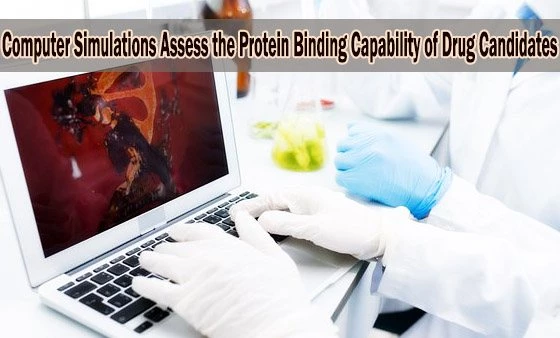Computer models, such as molecular docking and molecular dynamics simulations, are commonly used to predict a drug candidate’s ability to bind to specific proteins. These models can help identify the most promising drug candidates by simulating the interactions between the drug and the protein, and by evaluating the stability of the complex.
Combing computational physics with experimental data, the University of Arkansas researchers have developed computer models for determining a drug candidate’s ability to target and bind to proteins within cells.
If reliable, such an estimator may computationally show binding affinity, saving experimental researchers the time and effort of studying countless chemical compounds. The work could significantly cut down on the expense and duration of creating new medications.
“We developed a theoretical framework for estimating ligand-protein binding,” said Mahmoud Moradi, associate professor of chemistry and biochemistry in the Fulbright College of Arts and Sciences. “The proposed method assigns an effective energy to the ligand at every grid point in a coordinate system, which has its origin at the most likely location of the ligand when it is in its bound state.”
A substance, ion, or molecule, such as a medicine, is referred to as a ligand when it attaches to another molecule, such as a protein, to create a complex system that can either cause or prevent a biological function.
The focus of Moradi’s research is on computer models of diseases, such as coronavirus. For this project, he collaborated with Suresh Thallapuranam, professor of biochemistry and the Cooper Chair of Bioinformatics Research.
We developed a theoretical framework for estimating ligand-protein binding. The proposed method assigns an effective energy to the ligand at every grid point in a coordinate system, which has its origin at the most likely location of the ligand when it is in its bound state.
Mahmoud Moradi
Moradi and Thallapuranam used biased simulations as well as non-parametric re-weighting techniques to account for the bias to create a binding estimator that was computationally efficient and accurate. The conformational alterations of the ligand as it bound to the targeted proteins were then further described using an orientation quaternion formalism, a powerful mathematical approach.
By calculating the binding affinity between a well-known drug, heparin hexasaccharide 5, and a particular signaling protein, human fibroblast growth factor 1, the researchers put their method to the test.
The project was conceived because Moradi and Thallapuranam were studying human fibroblast growth factor 1 protein and its mutants in the absence and presence of heparin. They found strong qualitative agreement between simulations and experimental results.
“When it came to binding affinity, we knew that the typical methods we had at our disposal would not work for such a difficult problem,” Moradi said. “This is why we decided to develop a new method. We had a joyous moment when the experimental and computational data were compared with each other, and the two numbers matched almost perfectly.”
The researchers’ work was published in Nature Computational Science.
Moradi previously received attention for developing computational simulations of the behavior of SARS-CoV-2 spike proteins prior to fusion with human cell receptors. SARS-CoV-2 is the virus that causes COVID-19.





